Day 54: Understanding Infrastructure as Code and Configuration Management
 Siri Chandana
Siri Chandana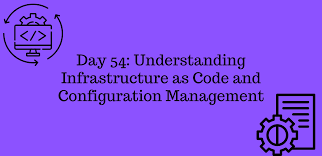
When it comes to the cloud, Infrastructure as Code (IaC) and Configuration Management (CM) are inseparable.
With IaC, a descriptive model is used for infrastructure management. To name a few examples of infrastructure: networks, virtual computers, and load balancers. Using an IaC model always results in the same setting.
Throughout the lifecycle of a product, Configuration Management (CM) ensures that the performance, functional and physical inputs, requirements, design, and operations of that product remain consistent.
What is Infrastructure as code?
Infrastructure as code is a mainstream pattern for managing infrastructure with configuration files rather than through a graphical user interface or through manual command line script sequences. It allows you to build, change, and manage your infrastructure in a safe, consistent, trackable, and repeatable way by defining resource configurations that you can version (in a version control system like GitHub), reuse, and share. The version control repository enables feature branch and pull request workflows, which are foundational dependencies of CI/CD.
Infrastructure as Code (IaC) is the practice of managing and provisioning infrastructure resources using machine-readable code or scripts. Rather than manually configuring and deploying infrastructure.
Features of Infrastructure as code (Iac):
Here are the key features of Infrastructure as Code:
Declarative Configuration: IaC allows infrastructure to be defined declaratively, specifying the desired state of the infrastructure rather than the step-by-step process to achieve it. This makes it easier to manage and maintain infrastructure configurations.
Version Control: Infrastructure configurations are treated as code and stored in version control systems like Git. This enables tracking changes, collaboration among team members, and rollback to previous configurations if needed.
Automation: IaC automates the provisioning, configuration, and management of infrastructure resources. This automation reduces manual effort, minimizes errors, and ensures consistency in infrastructure deployments.
Templating: Infrastructure configurations are typically defined using templates or domain-specific languages (DSLs) that abstract away low-level details. Templates allow for reusable and modular infrastructure code, making it easier to manage and scale infrastructure configurations.
Idempotent Operations: IaC ensures idempotent operations, meaning that the same configuration can be applied repeatedly without causing unintended side effects. This ensures consistency and reliability in infrastructure deployments.
Scalability: With IaC, infrastructure configurations can be easily scaled up or down to accommodate changing workload demands. This scalability is achieved through code-based configuration management and automation.
Consistency Across Environments: IaC enables consistent infrastructure deployments across different environments, such as development, testing, staging, and production. By using the same codebase to provision infrastructure, teams can reduce configuration drift and ensure consistent behavior across environments.
Self-Documenting Infrastructure: Infrastructure code serves as documentation for the deployed infrastructure, providing insights into the configuration and dependencies of various components. This self-documentation facilitates understanding, troubleshooting, and auditing of infrastructure configurations.
Integration with CI/CD Pipelines: IaC integrates seamlessly with continuous integration and continuous deployment (CI/CD) pipelines. Infrastructure changes can be automatically tested, validated, and deployed as part of the software delivery process, promoting agility and efficiency in software development and operations.
Immutable Infrastructure: IaC encourages the use of immutable infrastructure patterns, where infrastructure components are treated as disposable and replaced rather than modified in-place. This enhances reliability, security, and repeatability of infrastructure deployments.
How Does IaC Work?
Without IaC, the team would individually configure the infrastructure (servers, databases, load balancers, containers, etc.) for each deployment. Over time, environments that were intended to be identical, become inconsistent (they are often called “snowflakes”), which makes them harder to configure and subsequently slows down deployments.
It’s implemented like this:
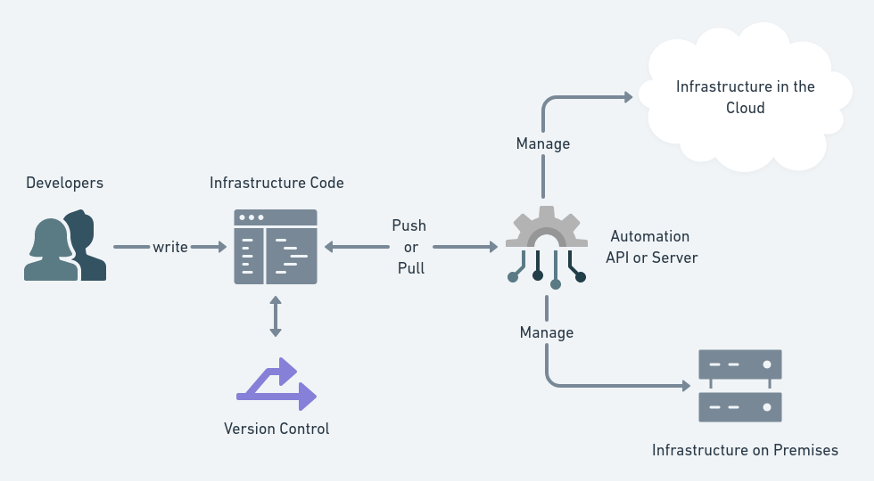
The team writes infrastructure configurations in a required programming language.
The code files are sent to a code repository.
An IaC tool runs the code and performs the required activities.
Benefits of Iac:
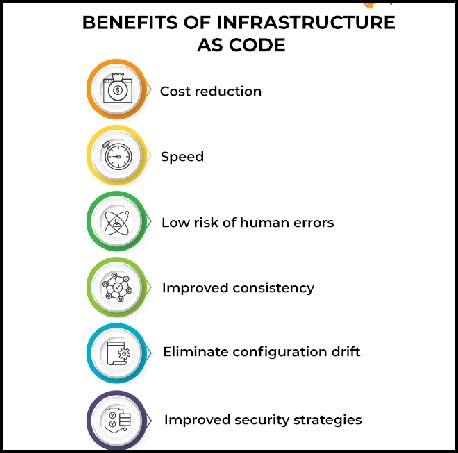
what is configuration Management (CM)?
Configuration Management refers to the process of managing the configuration of software systems and infrastructure in a consistent and automated manner throughout their lifecycle. This involves defining, maintaining, and controlling the configurations of various components such as servers, networks, databases, applications, and other resources.
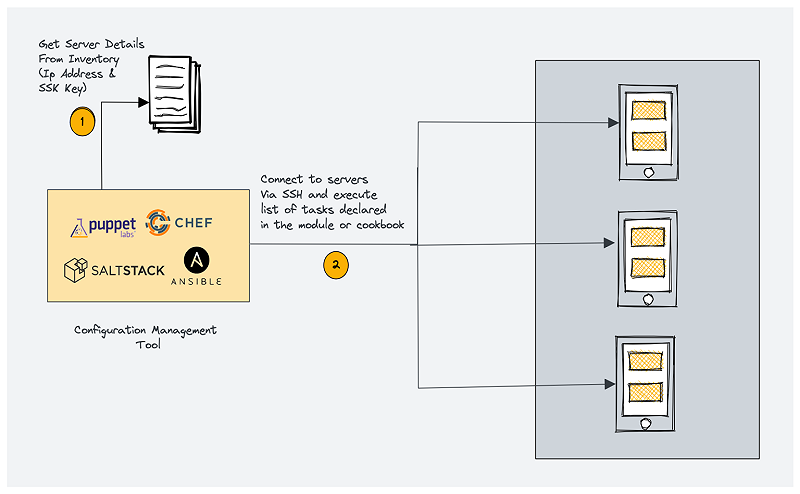
Features of Configuration Management:
Some of the key features include:
Centralized Configuration Repository: A centralized repository is used to store configuration files, scripts, and other related artifacts. This repository facilitates version control, collaboration, and easy access to configuration assets by team members.
Version Control: Configuration management tools provide version control capabilities, allowing teams to track changes made to configuration files over time. This enables rollback to previous configurations, audit trails, and collaboration among team members.
Infrastructure as Code (IaC): Configuration management supports the practice of Infrastructure as Code, where infrastructure configurations are defined and managed using code. This enables automation, repeatability, and consistency in provisioning and managing infrastructure resources.
Automated Provisioning and Deployment: Configuration management tools automate the provisioning and deployment of infrastructure and application components. This includes tasks such as server provisioning, software installation, configuration settings, and application deployment, reducing manual effort and ensuring consistency across environments.
Configuration Drift Detection and Remediation: Configuration management tools monitor systems for configuration drift, which occurs when the actual configuration of a system deviates from its desired state. Automated mechanisms detect drift and apply remediation actions to bring systems back into compliance with the desired configuration.
Policy Enforcement and Compliance: Configuration management tools enforce configuration policies and standards across systems and environments. They provide mechanisms to define and enforce compliance with security, regulatory, and organizational policies, reducing risks associated with misconfigurations.
Auditing and Reporting: Configuration management tools offer auditing and reporting capabilities to track changes, monitor compliance, and generate reports on the configuration of systems and infrastructure. These reports help in maintaining visibility, accountability, and governance over configuration changes.
Scalability and Flexibility: Configuration management solutions are designed to scale with the growing needs of organizations and accommodate diverse infrastructure environments. They support a variety of platforms, technologies, and deployment scenarios, providing flexibility in managing complex configurations.
Integration with DevOps Tools: Configuration management tools integrate with other DevOps tools and processes, such as continuous integration/continuous deployment (CI/CD) pipelines, monitoring systems, and collaboration platforms. This integration streamlines workflows, enhances automation, and promotes collaboration across development and operations teams.
Change Management and Approval Workflows: Configuration management tools facilitate change management by providing workflows for requesting, reviewing, and approving configuration changes. These workflows ensure that changes are properly documented, reviewed, and implemented in a controlled manner, reducing the risk of disruptions and conflicts.
Why Is Configuration Management Important?
From ensuring all the servers work as expected to massive scope for scalability, Configuration management (CM) is important for several such reasons:
DevOps Configuration ensures that all servers, applications, and systems are configured consistently and set up the same way, reducing the chances of any errors or differences in how they’re configured
CM system enables easy tracking of configuration changes, resulting in configuration transparency and audibility.
CM also offers automatic infrastructure provisioning and scaling, making it simple to add more servers or apps to the environment.
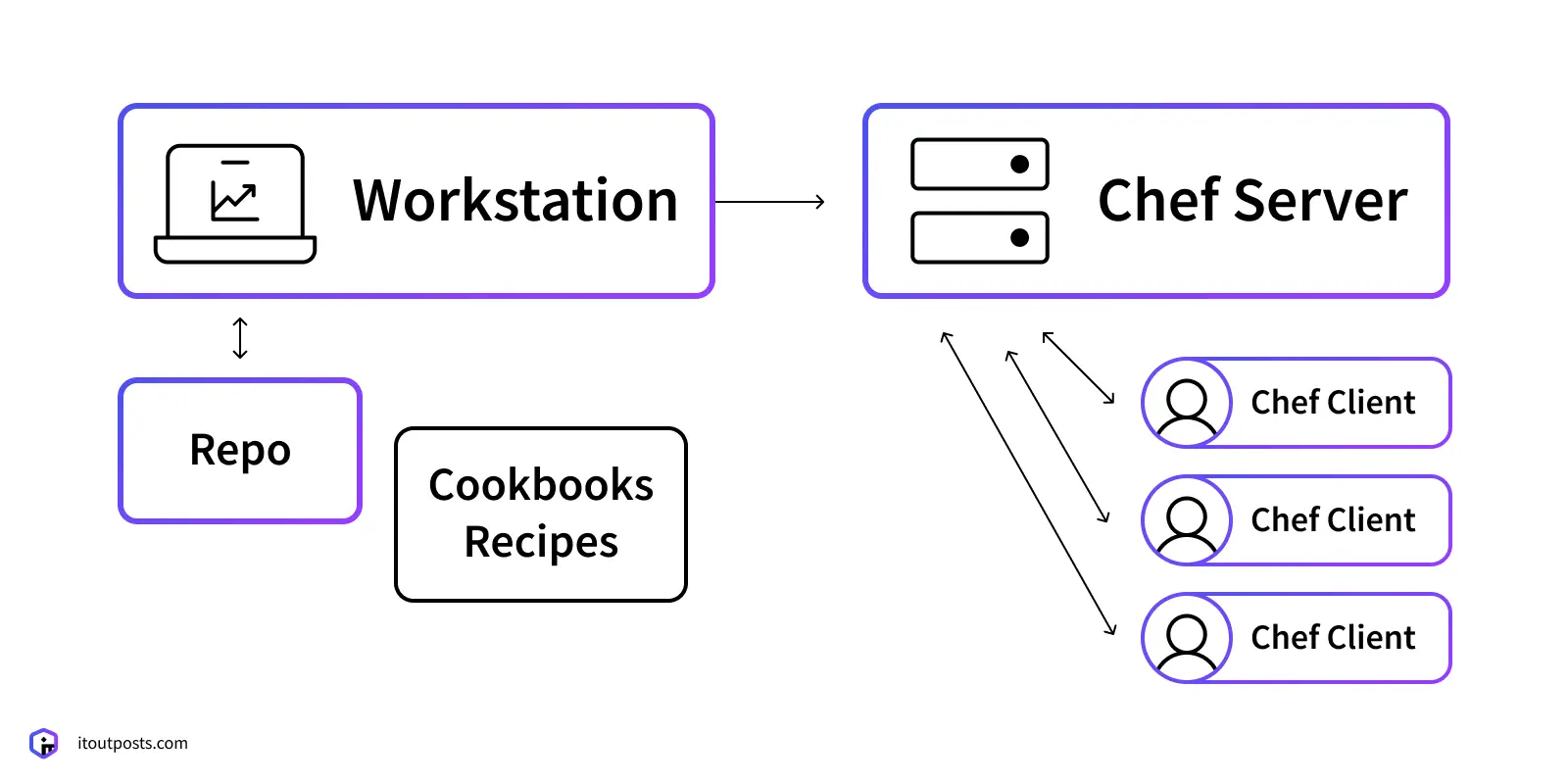
CM also ensures that all servers, applications, and systems are configured dependably and appropriately, enhancing the environment’s overall performance and reliability.
It also enables compliance by providing a means to document and audit configuration changes.
Configuration management lowers the need for manual configuration, which saves time and money.
Benefits of Configuration Management:
Reduced risk of outages and security breaches through visibility and tracking of the changes to your systems.
Cost reduction by having detailed knowledge of all the elements of your configuration, avoiding wasteful duplication of your technology assets.
Improved experience for your customers and internal staff by rapidly detecting and correcting improper configurations that could negatively impact performance.
Greater agility and faster problem resolution, enabling you to provide a higher quality of service and reduce software engineering costs.
Efficient change management by knowing your baseline configuration, and having the visibility to design changes that avoid problems.
Quicker restoration of service. In an outage, you'll be able to recover quickly as your configuration is documented and automated.
Give differences between both with suitable examples
Certainly! While Infrastructure as Code (IaC) and Configuration Management (CM) share some similarities and often complement each other, they serve different purposes and have distinct characteristics. Here are some key differences between the two concepts along with examples:
Purpose:
Infrastructure as Code (IaC): IaC focuses on defining and provisioning infrastructure resources (e.g., virtual machines, networks, storage) using code and automation tools. Its primary goal is to automate the deployment and management of infrastructure.
Configuration Management (CM): CM, on the other hand, focuses on configuring and maintaining the software and systems running on the infrastructure. It deals with aspects such as package installation, service configuration, and file management.
Scope:
IaC: IaC covers the entire lifecycle of infrastructure provisioning, including creation, configuration, and sometimes even destruction. It often involves defining infrastructure templates or scripts to automate resource provisioning.
CM: CM is primarily concerned with managing the configuration of software systems and applications running on the infrastructure. It typically involves tools and processes for maintaining consistency, applying changes, and ensuring compliance with desired configurations.
Granularity:
IaC: IaC operates at a higher level of abstraction, dealing with infrastructure components as a whole (e.g., virtual machines, networks). It allows for the provisioning of entire environments or infrastructure stacks with a single configuration.
CM: CM operates at a lower level of granularity, dealing with individual software components, files, and configurations within the infrastructure. It focuses on managing configurations at a finer level of detail, such as package versions, service settings, and file permissions.
Examples:
IaC: An example of Infrastructure as Code is using tools like Terraform or AWS CloudFormation to define and provision cloud resources such as virtual machines, databases, and networking components. For instance, you could use Terraform to define a set of AWS EC2 instances along with associated security groups and networking settings.
CM: An example of Configuration Management is using tools like Puppet, Chef, or Ansible to configure and manage software applications running on the provisioned infrastructure. For example, you could use Puppet to ensure that specific packages are installed, service configurations are set correctly, and files have the desired content across multiple servers in your infrastructure.
In summary, while Infrastructure as Code focuses on automating the provisioning and management of infrastructure resources, Configuration Management focuses on configuring and maintaining the software and systems running on that infrastructure. Together, they enable organizations to achieve automation, consistency, and reliability in managing both infrastructure and application configurations.
What are the most common IaC and Config Management Tools?
Common IaC Tools:
IaC tools can vary as far as the specifics of how they work, but we can generally divide them into two main types: the ones that follow the imperative approach, and the ones who follow the declarative approach. If you think the categories above have something to do with programming language paradigms, then you’re spot on!
The imperative approach “gives orders.” It defines a sequence of commands or instructions so the infrastructure can reach the final result.
A declarative approach, on the other hand, “declares” the desired outcome. Instead of explicitly outlining the sequence of steps the infrastructure needs to reach the final result, the declarative approach shows what the final result looks like.
Some of the Infrastructure as Code (Iac )Tools are:
Terraform: Terraform stands out as an open-source Infrastructure as Code (IaC) tool, empowering users to articulate infrastructure configurations through a declarative syntax. What sets it apart is its remarkable versatility, as it seamlessly extends its support to various cloud providers and on-premises environments.
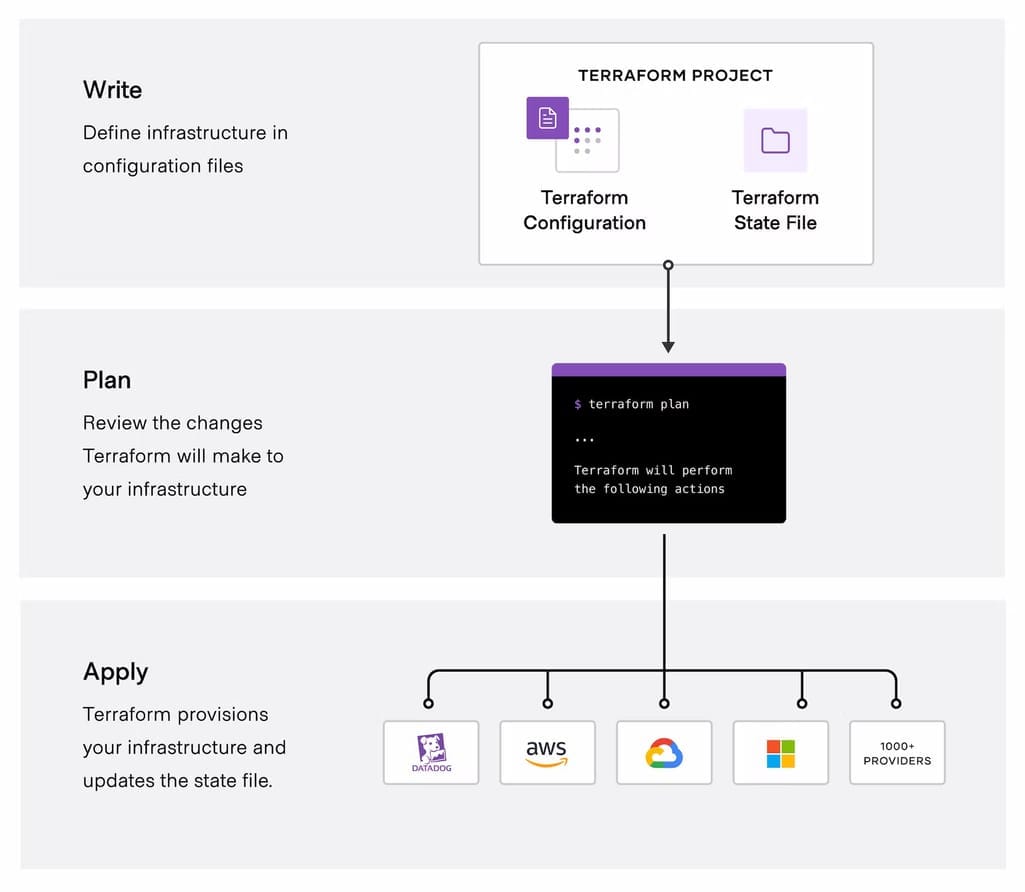
AWS CloudFormation: AWS CloudFormation offers a powerful means to express and provision your AWS infrastructure in code form. Leveraging JSON or YAML templates, it elegantly outlines resources and their interdependencies, simplifying the management of your AWS resources.
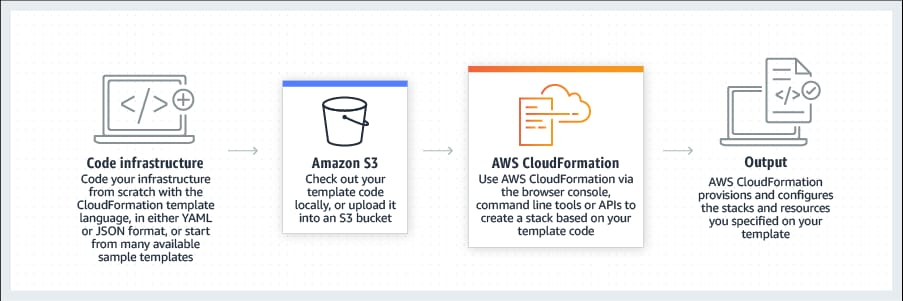
Pulumi: Pulumi is a modern IaC tool that allows users to define infrastructure configurations using familiar programming languages such as JavaScript, TypeScript, Python, and Go. It offers a higher level of abstraction and flexibility compared to traditional IaC tools, enabling developers to leverage their existing skills and libraries.
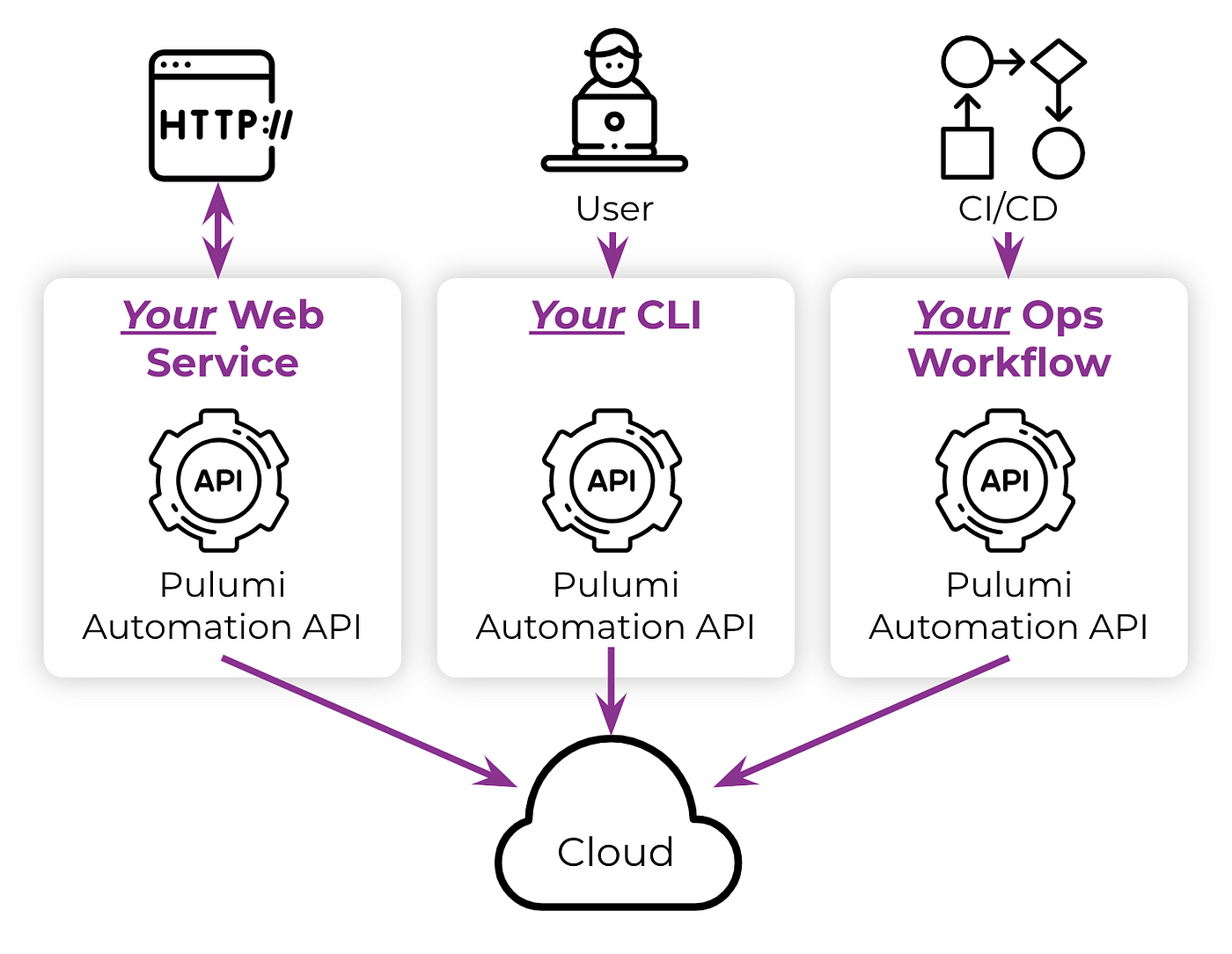
Configuration Management (CM) Tools:
Puppet: Puppet is a widely used configuration management tool that automates the provisioning, configuration, and management of software and systems across heterogeneous environments. It uses a declarative language called Puppet DSL to define configuration policies and apply them consistently across nodes.
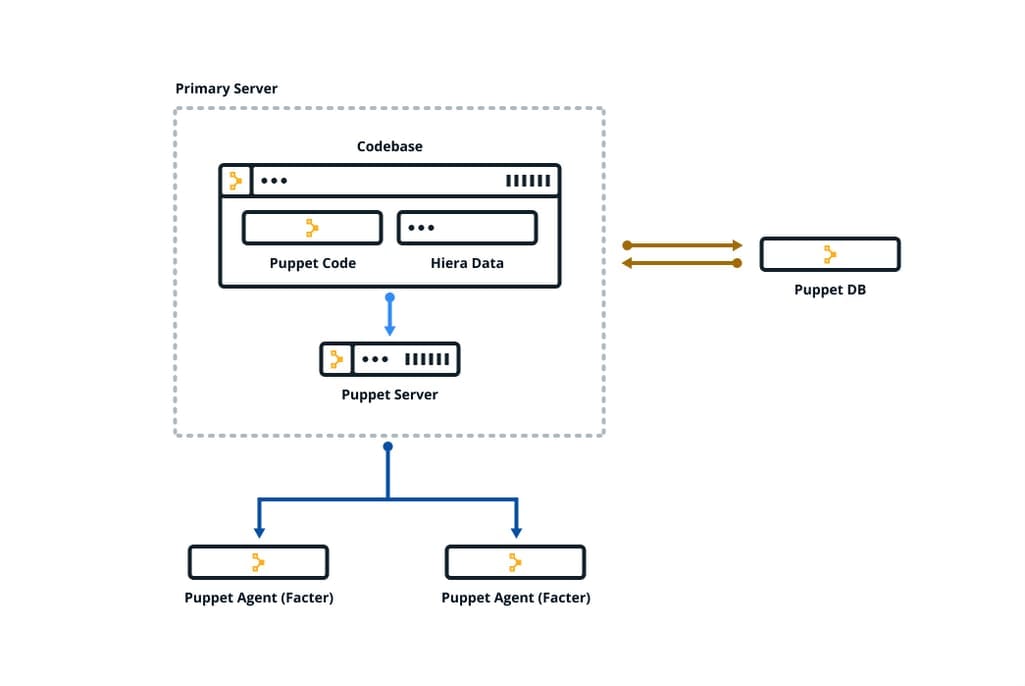
Chef: Chef is another popular configuration management tool that provides automation for infrastructure provisioning and application deployment. It uses a domain-specific language (DSL) called Chef DSL to define configuration "recipes" and "cookbooks" for managing systems and applications.
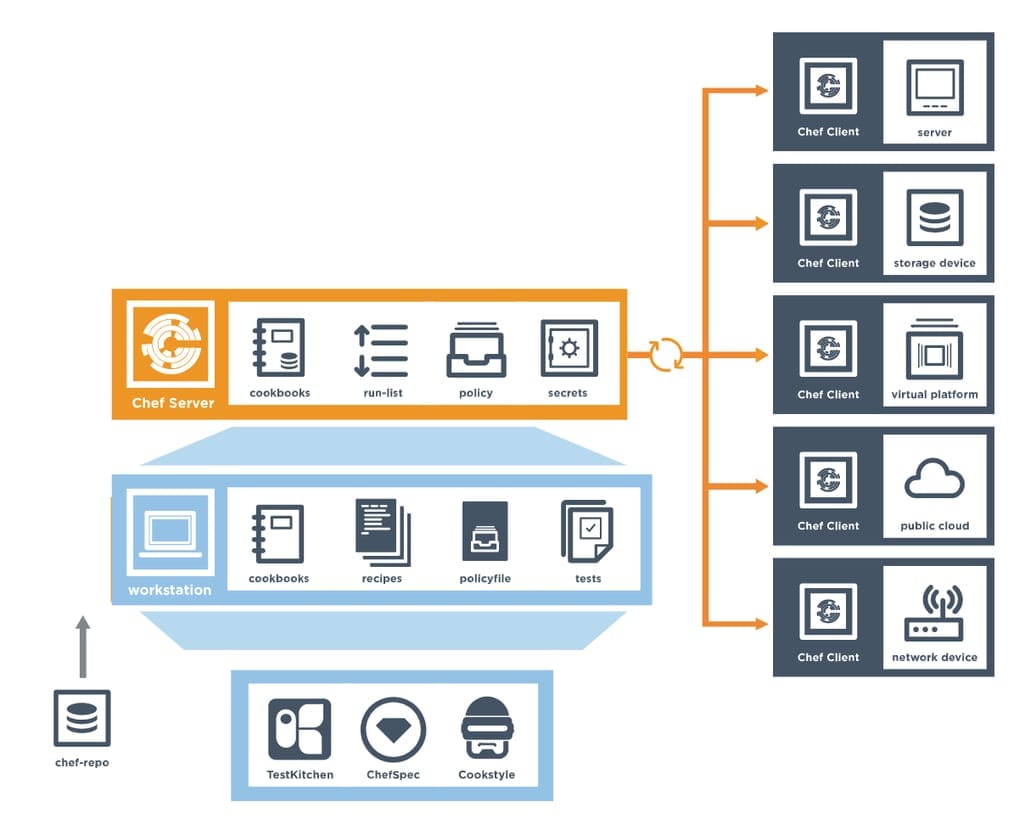
Ansible: Ansible is an open-source configuration management and automation tool that uses simple YAML-based playbooks to define configuration tasks and execute them across remote nodes over SSH. Ansible's agentless architecture and simplicity make it easy to get started with and scale across large infrastructures.
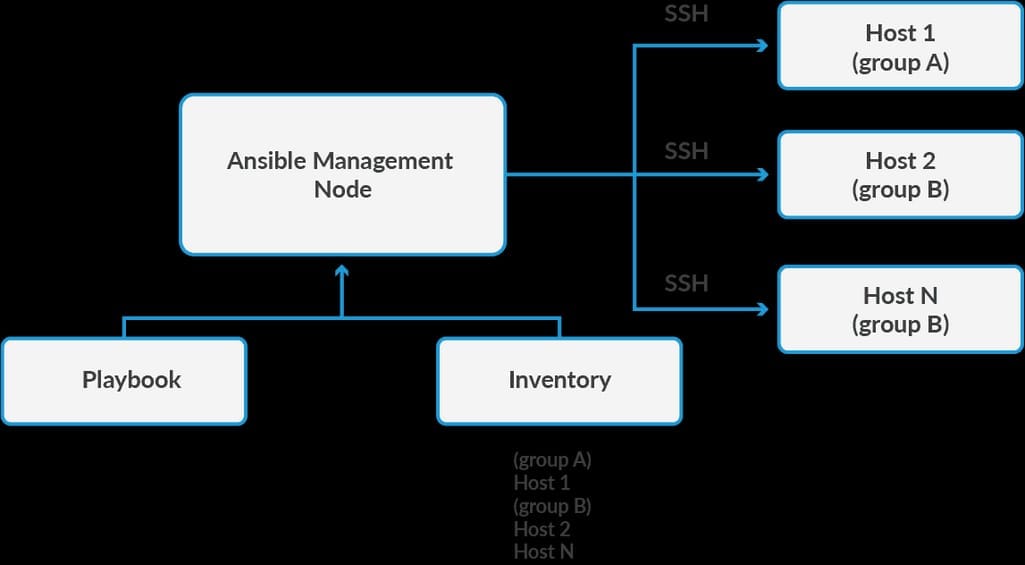
SaltStack: SaltStack, also known as Salt, is a powerful configuration management and orchestration tool that uses a master-agent architecture to manage and automate infrastructure resources. It offers features such as remote execution, state management, and event-driven automation for complex IT environments.
These are just a few tools of the many IaC and CM tools available in the market. The choice of tool depends on factors such as the specific requirements of the organization, the target infrastructure platforms, existing skill sets, and preferred workflow preferences.
Conclusion:
By leveraging the strengths of IaC and CM tools, organizations can achieve automation, consistency, scalability, and agility in managing their infrastructure and applications, leading to better business outcomes and enhanced competitiveness in today's fast-paced digital landscape.
Thank you for 📖reading my blog, 👍Like it and share it 🔄 with your friends.
Happy learning😊😊
Subscribe to my newsletter
Read articles from Siri Chandana directly inside your inbox. Subscribe to the newsletter, and don't miss out.
Written by
